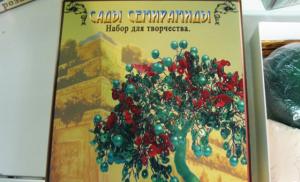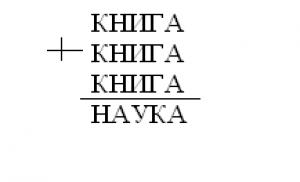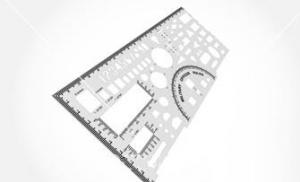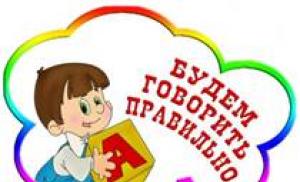Golden section auction house. Underground and contemporary art: an auction in the "golden section"
April 12 at the auction house "Golden Section" (Kyiv, Pervomayskogo str., 4) will be held a large spring auction CLASSIC UNDERGROUND CONTEMPORARY. Organizer - the auction house "Golden Section".
The total number of works - 90 works.
The pre-auction exhibition will be held in two stages.
The second part of the pre-auction exposition - CONTEMPORARY - will be held
From the first day of the pre-auction exhibition, collectors will be able to place bids at a silent auction online (on the website of AD "Golden Section" www.gs-art.com in the online catalog) and directly in the exhibition hall. April 12 will be the final live auction.
Classical art at the auction will be presented by paintings from the 1940s-1990s. - the heyday of realism and impressionism in Ukrainian painting.
Block top lots CLASSIC: David Burliuk and his two works - "Tea Party" and "Card Players" (1950s), Nikolai Glushchenko and his "Waters" (1956), Alexei Shovkunenko and the work "Thunderstorm" (1940s). And also - the painting by Sergei Shishko "The Bank of the Dnieper" (1952), the work of Fyodor Zakharov "Still life with roses against the background of the picture" (1972) and the creation of Josip Bokshay "Autumn in the Carpathians" (1964).
In addition, admirers of classical art will enjoy the works of Pavel Gorobets, Adalbert Boretsky, Vladimir Mykita, Andrey Kotsky, Vasily Chegodar, Valentina Tsvetkova and other authors.
The main lots of the section UNDERGROUND will become: the painting "Memories from Childhood" (1966) by Ernest Kotkov, the work of Boris Plaksiy "Avant-garde composition" (1970), "Bird on an animal riding a ride" (1992) by Maria Primachenko, the work "Girl" (1960s) by Grigory Gavrilenko , "Abstract composition" (1972-1975) Henrikh Tigranyan,
“I read your thoughts” (1999) by Ivan Marchuk, “People and Mirrors” (1961) by Stanislav Sychev.
As well as works by artists of the sixties - Ferenc Seman, Alla Gorskaya, Viktor Zaretsky, Feodosy Tetyanich, Konstantin-Vadim Ignatov, Oleg Sokolov, Galina Grigorieva.
Block CONTEMPORARY consists of 40 works. Top lots in the contemporary art section: "Soaring Rags" (2003) by Alexander Gnilitsky, "Breakfast with Giraffes" (2016) by Dmitry Kavsan, "Venice" by Yaroslav Prisyazhnyuk, "Structures" (1990s) by Anatoly Krivolap, "The Beach" (2015 ) Maksim Mamsikov. As well as the creation "11092012" by Vasily Bazhai in 2012, "The Big Fountain" (1997-2013) by Sergey Anufriev and Igor Gusev, "Variation on the Theme of the Avgan Ketuba" (2017) by Pinchas Fischel and Roman Minin's fresh work "LOVE" in 2017.
The highlight of the block of contemporary art is the work of the five main representatives of the artistic association "Picturesque Reserve" - Tiberiy Silvashi, Anatoly Krivolap, Marko Geiko, Nikolay Krivenko, Alexander Zhivotkov.
Prices for works of art presented at the auction range from $300 to $20,000, the average cost of works is $2000-3000.
« The auction collection turned out to be very diverse. Many works are practically not found in the open sale. In order to interest beginner art collectors, as well as to give experienced collectors an opportunity to bargain for rare works, we have lowered starting prices compared to their real market value. Bidding will definitely be of interest to those collectors who, with minimal costs and investment risks, want to purchase high-quality works, the value of which will soon increase.", - emphasizes the co-owner of the auction house "Golden Section" Mikhail Vasilenko.
“There weren't many people at the auction. The organizers were counting on bets by phone - and there were bets. Bidding can hardly be called active, but several works were bought in the hall.
If the estimates were lower - perhaps there would be a struggle at the auction. Estimates of works need to be lowered in order to test the market.
Several people traded for the work of Mikhail Deyak. With a lower estimate of 4,500, the work was sold for 6,000. There was a struggle for the works of Odessa artists: for example, the work of Oleg Sokolov, at a start of $ 400, was sold for 700. Works by Odessa artists Altanets and Moldovanov were also sold (at the start) - the works were installed realistic estimates, so there was interest in them.
The works of the masters of modern Ukrainian art: Roitburd, Gusev, Mamsikov, Marchuk, Zhivotkov - were not sold. But the works of lesser-known artists have been bought over the phone - so it's hard to talk about trends as to what's going on in the market. Let's hope the market picks up.
We are located somewhat away from the world centers of art and art business. In late November - early December, auctions will be held in London dedicated to Russian and Soviet art. And then it will be possible to talk about what is happening on the global market of Ukrainian and Russian art at the moment.”
On November 28, the Golden Section auction house held its 40th anniversary auction, which resulted in 43% of the lots sold. The theme of the auction - underground and contemporary art - UNDERGROUNDCONTEMPORARY.
No less active were the post-sales, which confirmed the interest of collectors in the mentioned areas of art. As a result of 68 works by famous Ukrainian authors, whose works are an adornment of many museum and private world collections, the auctioneers sold 40 works of art. And post-bidding will continue for another week.
All images provided by the organizers
“Both in the world and in Ukraine, we are seeing an increased demand for the art of contemporaries - the cost of their work continues to grow - plus 12-15% by the end of this year. No less interesting to collectors are paintings by representatives of the underground movement - this segment has been showing steady growth for several years now. At the same time, the political situation in the country influences art sales much less. This testifies to the strengthening of the positions of the Ukrainian art market and the reliability of investments in art,” emphasizes Mikhail Vasilenko, co-owner of the Golden Section auction house.
Among the works sold during the auction are the top lots of the modern block - Anatoly Krivolap and his "Landscape", which went under the hammer for $6,050 with a starting price of $4,000. As well as the painting "Meeting" by Alexander Roitburd, sold for $4950 at a start of $3500. And the early work "Portrait of a Woman" by Ilya Chichkan, which was bought for $5225 at a start of $4000. Among other sold works of the modern blog are “Night Kyiv” by Mikhail Deyak, “Eastern Landscape” by Pavel Makov, “Confusion” by Konstantin Lyzogub, “Goldfish” by Vladimir Miller, “Kyiv. St. Andrew's Church” by Vadim Mikhalchuk, “On the Pier” by Valeria Fokina and the creations of other contemporaries.

Underground artists also received increased attention from admirers of this trend. In particular, “Sketch for a Mosaic” by Alla Gorskaya was sold for $1650, the work “Struggle” by Gorskaya’s closest friend Boris Plaksiy went under the hammer for a similar price, the collectible painting “Me and Ernst” by Valentin Khrushch was bought at auction for $2420. In addition, other top lots of once-banned authors were also sold during the auction: Lust by Ernest Kotkov, Nudes by Viktor Grigorov, Flowers in a Vase and Breakfast by Mikhail Turovsky, Coast of Crimea by Lucien Dulfan, Andreevsky Descent ” Anatoly Lymarev, “Nu” by Maya Zaretskaya and other works.
Information about AD "Golden Section":
Auction House "Golden Section", founded in 2004, regularly holds auctions and exhibitions and sales of paintings and drawings, Russian icons.
The main activities of the company - classical paintingXIX- XXcenturies, the art of alternative movements (avant-garde, non-conformism, underground), contemporary "actual" art, object design and photography, as well as Russian Orthodox icons. All works of art come to the auction from a wide variety of private collections and galleries in the CIS and European countries.
The art market for many in Ukraine is still a dark side. the site decided to find out the answers to all the questions that you wanted to ask, but didn’t know to whom: in a long interview, the art market expert, co-founder of the Golden Section auction house, Alexei Vasilenko talks about the features of the auction house, which was the first to work with contemporary art in Ukraine, the sale and purchase of works of art, the distinctions of the Ukrainian collector, the most expensive artists and much more.
- Alexey, please tell us at what point and why did the Golden Section auction house appear?
– My brother and I were interested in art from an early age, and then, when we grew up, my father brought us to the collectors' club, which still takes place every Saturday at Expocentre, on Levoberezhnaya. Everyone who collects anything gathered there, from stamps to folk icons, pictures and arts and crafts. There, for many years we watched, got to know each other, talked… In the early 2000s, we got into dealership a bit (bought something, sold something) and studied at the same time. In 2004, we decided to create an auction house, as it became clear that the market was not fully covered, there were certain empty niches - in Ukraine at that time there were only a few auction houses that held official auctions for art objects. Over time came the experience of both auctions and private sales. In 2009, for the same reason, we opened a contemporary art department, and over time, we held 3 more auctions of Ukrainian design and photography.

Brothers Alexey and Mikhail Vasilenko
During the existence of the "Golden Section" we have designed about 200 collections in different areas, from classical Ukrainian and Russian art to contemporary. Recently, it was planned to enter the European market. Before the revolutionary events, we planned to open a representative office in London and systematically hold an auction of Eastern European art there, presenting artists from 9 countries in the auction collection. Today this project is frozen, but we will return to it as soon as the situation in the country stabilizes.

- They say that the art market and art are two completely different, non-intersecting spheres, they say, commerce is always, first of all, commerce. What do you think about this as a person who constantly works with the purchase and sale of works of art?
– I absolutely disagree. Non-art is not worth money. I will give a simple example - Gapchinskaya, a fully commercialized artist who has promoted her brand. Her works will never be sold at auctions, simply no one will buy them. Her paintings delight children and they have their own purpose, but this is not art, in the sense in which it is interpreted. It's like a Rado watch, which has nothing special about it, but whose creator company once carried out an advertising campaign in such a way that in certain circles and at a certain period of time everyone dreamed of wearing it on the wrist. As a result, their prices have risen exorbitantly.
- How then are the prices for the works of artists formed?
A work of art is worth as much as one is willing to pay for it. For example, for the "strong" work of Mamsikov, we can name 50,000 dollars, but no one will pay more than 15,000. Because today, taking into account the situation on the market and the number of collectors eager to have his work, it is worth plus or minus exactly this money.

A lot of factors influence pricing. In all directions and currents, the name of the artist is first of all important. For Aivazovsky, for example, there will be one order of prices, for Klodt (Mikhail Konstantinovich Klodt von Jurgensburg - Russian landscape painter of the second half of the 19th century - ed.) - another. And then, in the artist's work there are a lot of pricing factors, starting with the period, size, technique, and so on. How this artist is represented in the market is also of great importance. If there is a shortage of his works on the market - all of them are in museums and private collections, while the desire to own the work of this artist is stable - the cost will only grow.

S. Shishko “View of the Ayu-Dag”, 1956
Why does Western classical and contemporary art cost such crazy money? It is not only a matter of a well-established and wide market, it is also a matter of competitiveness among buyers. Who is more eager to have this or that piece of art, you know? Always any record sales at auctions set a certain bar for the secondary market, the average cost of a record-breaking artist then rises by 10-15%.
One of the important reasons why customers are afraid to buy art is that prices in Ukraine fluctuate a lot, there is no stability. This is because artists are often forced to play two roles: the creator and the businessman, while the latter often fails due to a lack of knowledge of the principles of the market's functionality. For a number of reasons, most often just to simply buy canvas and paints, artists underprice their work too much, which over time gives the collector the impression that galleries and auction houses are selling paintings at inflated prices.

– At the same time, they often say that there is no art market in Ukraine. What do you say?
- Now the art market in Ukraine is in the process of formation, but we do not have an elementary culture of the art market. Throughout the civilized world, there is a clear system and a certain dogma according to which the market functions: galleries, auction houses, market agents - all participants interact very comfortably and naturally with each other. Each performs its necessary function. In Ukraine, on the other hand, chaos and a vicious circle are observed: galleries do not have enough funds to afford to “fix” artists for themselves, promoting them on the domestic and international markets, thereby shaping their pricing policy.
There is no money, because a critically small number of buyers. And the latter are not present, since there is no culture of gathering, and, in general, there is no love for art on a national scale.
No money, because a critically small number of buyers (collector). And the latter are not present, since there is no culture of gathering, and, in general, there is no love for art on a national scale. This is the main problem of today's art market in Ukraine. If, for example, we take the segment of contemporary art, we can count, if we are lucky, up to a hundred collectors throughout the country. By the way, in England the attitude to art is formed from an early age. The tradition is so rooted that the average family distributes the family budget in such a way that once every six months or a year it allocates funds for the purchase of paintings, sculptures, photographs, etc. That is, among the distributions of money for food, clothing, education, utilities, travel, the budget for the purchase of an object of art is also “registered”. Today it is difficult to imagine such a depth of attitude towards the art of a post-Soviet person.

- That is, abroad, interest in art is instilled from school?
- Since kindergarten! In educational programs adapted for children, a love for music, painting, literature, and design is instilled. The history of art is taught in high school. Since there is no such tradition in Ukraine, many people, when they grow up, life and personal values are shifted. Most simply do not understand why art should cost more than two hundred dollars. And at the same time, for the majority, the ultra-high cost, for example, of watches, is very transparent and understandable.
– Who are your clients? Describe the average person who constantly purchases work from you for their collection.
– Our customer is often not a politician. Which, by the way, is very strange when compared with the same Europe or America. Our clients are from different industries, but what distinguishes them is their education and constant search for something new. For the formation of a collection, this is an important quality. After all, having decided on the artist, period and direction, you are constantly in search - you visit fairs, flea markets, follow auctions, acquire, over time, sell some works from the collection, change, etc. This is drive. And the feeling when you manage to buy a masterpiece for a penny is generally incomparable with anything.

But it can be noted that buyers of classical art and contemporary art are completely different types. Collector of contemporary art is often a young successful businessman, 25 - 40 years old. A collector of classics is an older person, 40-60 years old, more conservative, with firm traditional views. And theoretically, a collector of classical art can switch to modern art, but a collector of modern art is unlikely to start collecting classical art later. Although, of course, everything is very individual.


– You say that there are very few politicians among your clients. Maybe you know why Ukrainian officials have no taste at all? Why do they all have a “Mezhyhirya complex”? By the way, have you been to this exhibition?
- I think not everyone, the vast majority - I agree. No, I was not at the exhibition - I looked at the photos in the news and did not waste time. Everything again rests on education and values. In all countries of the world, the government is corrupt to one degree or another, the world is not perfect. It's just that it happens in disproportionately smaller volumes. In our country, when they come to power, the first thing that politicians and officials claim is to have time to "squeeze" as much budget money as possible, until others with the same tasks come to their place. European and American politicians have completely different goals - they first of all think about leaving a trace behind them. Fundamentally different approaches. An elementary example: in Kyiv (I won’t even talk about the rest of the city) there is practically no urban sculpture. Although, to allocate 200-300 thousand dollars from the budget and make a competition is a penny. Today, there are independent platforms (one of them is the Kyiv Sculpture Project), which, on their own, are trying to develop the culture of urban sculpture in Ukraine, but why is this not of interest to the authorities, even at the city level? And, of course, organizations such as KSP are a drop in the ocean, despite the fact that their activities are difficult to overestimate. But really serious steps in this direction are almost impossible without the support of the government of the country, one way or another.

A. Savadov “Ballerina”, 2003
– As for non-commercial platforms: why is it more prestigious for us to invest in the purchase of a material work of art, and not become a sponsor and help some important non-commercial project?
- It exists, but it also counts for a few people and organizations that act as patrons. Much rests on the absence of a law on patronage. For example, Victor Pinchuk, who opened the Pinchuk Art Centre. I will not criticize this site, because it, just like its owner, has its own goals. For most companies and individual businessmen, a simple fact remains incomprehensible - philanthropy, however, like collecting, in addition to educating the viewer, promoting culture and pleasure as such (moral aspect), also brings very understandable "dividends". Collecting and philanthropy give a certain status and open the door to a very narrow circle of people. When it comes to the European mentality, for them the fact of involvement in art is like a white flag - if you understand art, it means that you can talk about something with you, it means that you are an interesting person. My first education was a musician, I graduated from the Kyiv Conservatory, and although now I don’t play often, nevertheless, I don’t regret my education - it was it that opened a wide inner horizon in me. The same can be said about all creative professions: in simple terms, when you pass fine art, music or literature through the prism of your inner world, you can feel, you become more human.

Nikita Kravtsov “Wounded swimmer”, 2014
– You have designed approximately 200 collections, one hundred of which are contemporary art. But a wide audience knows the name of one Igor Voronov, who periodically demonstrates individual works from his collection. Why is there such a trend and why is everything so secretive in Ukraine? Is it possible that someday they will still show their collections?
- In fact, many collectors are public people, but in general you are right. This is again the specificity of our society. Since there are many times fewer middle-class residents in our country than those who are below the poverty line (the capital does not count), and the majority is thinking about how to live on $300-500 a month - you must admit, a public purchase of a painting for $50,000 and the demonstration of this will not cause the most positive emotions in them. This is what is for many a brake on the issue of publicity, both as a collector and as a collection.
As for whether they will show their collections? I guess yes! The "journey" of art objects from the artist's studio in most cases ends sooner or later within the walls of the museum. Often the collection is collected for this purpose. Many generations are devoted to her life before the collection is transferred to the museum. Often new museums are formed on the basis of these collections.
- In order for the middle class to join the ranks of collectors, is it necessary to completely reformat the country's economy? Or are there some other problematic points, in addition to economically unfavorable conditions and poor education?
– This is a process of several generations, in my opinion. First of all, educational programs should appear, systematic. Instead of endless serials, TV should show interesting educational programs about culture. It must be some kind of "cultural zombie". There should be a clear program for the popularization of art, a program of cultural policy in the country as a whole.

Viktor Melnichuk “Pink day”, 2014
– Is your auction house somehow trying to instill taste, doing something for this?
– Yes, but we are, first of all, a commercial organization. Our goal is to shape the market and the buyer. For our potential clients and those who are just interested, we arrange some sort of lectures. We talk tête-à-tête about schools of painting, compare the periods of this or that artist, share literature, invite to exhibitions, etc. Very often, a few meetings are enough to light a fire in a person, which over the years “flares up” into a fire of passion for art. But everyone comes to it in their own way. If you have a craving for beauty, sooner or later it will manifest itself, be sure.

– You are the first auction house in Ukraine that started working with contemporary art. Was it not scary?
- Scary! But we are risky guys! To date, we have held 7 auctions of contemporary art. When we held the first one, when recruiting a collection, we completely trusted the opinion of experts (in the content of the collection) and gallery owners (in pricing policy), which, as a result, was reflected in the sales results. At that time, almost all artists were overpriced. Bidding passed with a result of 3% of sales. Step by step, merging into the environment, we have established ourselves and began to hold auctions regularly, to navigate both the pricing policy and the professional level of artists. Naturally, with this understanding, sales increased. For the buyer, in turn, a certain transparency in pricing policy, the structure of the art market, etc. began to appear.

Alexander Kurmaz (HOMER) “Untitled”, 2008
– How do you work in the current conditionsviyah, after such strong political and social upheavals?
- Organizing an auction is very expensive. To break even, you need to sell about 30% of the collection. Due to the situation in the country, many of our clients have paused in the purchase of art objects, some have left the country, so it makes no sense to hold open auctions now. For the past six months, the art market has noticeably "cooled down", but some dynamics are already being felt, which may lead to the activation of the market in the near future.
- And the cost of the work of artists have now fallen or, on the contrary, increased?
- In such moments of political or economic crisis, which we are seeing today in our country, of course, works of art cease to be the subject of attention even for those who are passionate about them. Accordingly, the market is less active, and with millet, as a rule, the offer price falls. It has always been so. Art is food for the soul, and in times of crisis, food for the body is the first thing you think about. However, it is precisely at such moments as now that the best collections have been formed and will continue to be formed. At what the best in every sense - both in terms of the quality of the material, and in terms of economy.
- Objectively, this is a trio of artists - Arsen Savadov, Vasily Tsagolov and Alexander Roitburd. Anatoly Krivolap, as you know, the most expensive artist on the results of auction sales. The works of these same artists are the most expensive in the secondary market. As for young artists, it is already almost certain who, in, say, five years, will cost many times more. This list includes Nazar Bilyk, Artem Volokitin, Zhanna Kadyrova, Nikita Kravtsov, Stepan Ryabchenko, APL 315. And the list goes on.

Apl315 “Double-Trouble”, 2011
– What is purchased most often in Ukraine?
- Since the market for contemporary art is relatively young, it is natural that the volume of Ukrainian Soviet art is larger. This is not about propaganda art, works that were created under the order of the party, but the creative works of artists of that time. These are landscapes and still lifes by Viktor Zaretsky, Sergei Shishko, Nikolai Glushchenko, Alexei Shovkunenko, Tatyana Yablonskaya, Sergei Grigoriev, Vasily Chegodar and many others.

Evgeny Petrov “Winter”, 2011
– Do you collect yourself?
- Oh sure! Both my brother and I are experienced collectors. At first he collected "classics", now he switched to contemporary art and design. I am very critical of my collection. I buy only those items that literally start to shake me! From the last acquired - paintings by Evgeny Petrov, Viktor Melnichuk and Nikita Kravtsov, the object of Derkach. In the future, when I can afford it, I will definitely buy a portrait by Modigliani. This is what can be called an achievable dream. Of the almost unreal - to find it :)



01 / 5













